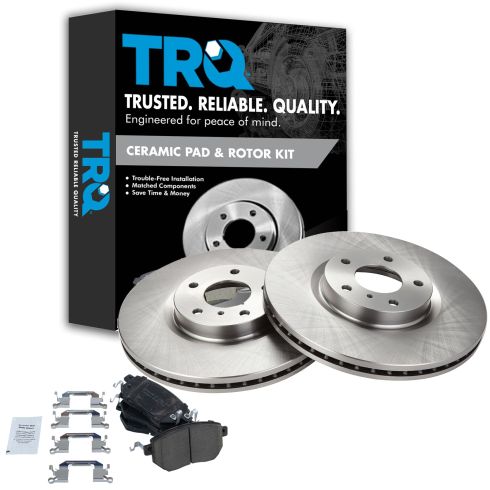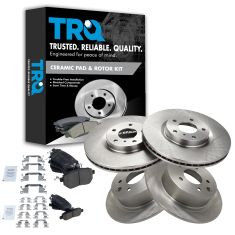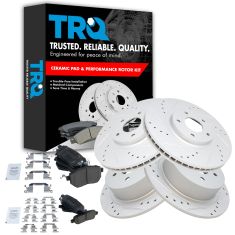1ABFS00356-Nissan Infiniti Front Ceramic Brake Pad & Rotor Kit TRQ BKA10601

Replaces
2005 Nissan Maxima Front Ceramic Brake Pad & Rotor Kit TRQ BKA10601

Product Reviews
Loading reviews
4.91/ 5.0
11
11 reviews
Fast shipping, good price, great products
October 5, 2017
Although I haven't installed the rotor kit for my 07 Maxima, I measured all the parts to make sure they were correct fit. I had just been burned by another online parts dealer because they sent a kit for an Altima instead of Maxima. Cost more to ship it back than I paid for that junk.
1A had same day shipping and free too.
Can't beat their service.
Rotors and brakes
December 22, 2017
There good quality perfect fit and great stopping.
Front brakes/rotors
June 3, 2018
Have never used Nakamoto brake rotors and pads before, but figured I would give them a try. So far only a few hundred miles on them. At first glance the quality of the product seems to be on par with original brakes. The stopping power of the pads seem to be quite good. Too early to know if brake dust or premature wearing is an issue.
Excellent
May 13, 2019
Free shipping was quick, the parts are quality and have no brake noise or dust. I will purchase again!
Couldn't be happier
January 22, 2020
This is my second time ordering from 1aauto and won't be my last.The brakes and rotors were great price compare to other places .will recomand if you want quality for the right price nothing like 1aauto .my only dislike was when delivery was drop off the box seem very loose and taped not strong enough to hold don't know if it was from the warehouse or from the delivery driver but my brakes and pads weren't damage just need better handling when put in box .other than that great job 1aauto !!!
I am recommended to buy from one a auto is fast cheap and good products
October 26, 2021
I am recommended to buy from one a auto is fast cheap and good products
Nissian Brakes and rotor combo was excellant.
December 28, 2021
I love my rotors and brakes combo.
Good price..
April 13, 2022
Was satisfied.. Thanks..
February 9, 2023
Great kit, great fit, very happy with purchase
June 14, 2023
Perfect fit and affordable price
Great parts fast shipping!
October 23, 2024
Great product as usual!!
Customer Q&A
No questions have been asked about this item.
Nissan is a registered trademark of Nissan Motor Co., Ltd. 1A Auto is not affiliated with or sponsored by Nissan or Nissan Motor Co., Ltd.
See all trademarks.














